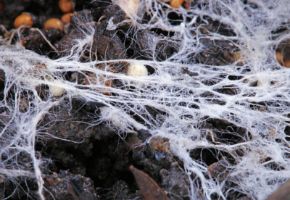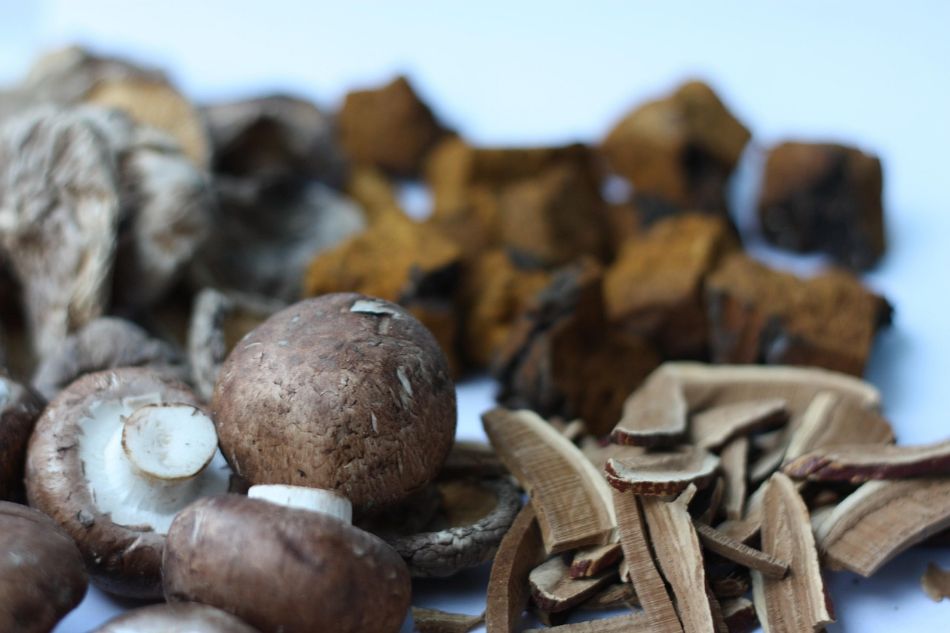Shikimic acid is one of the organic molecules of great scientific interest, found in various plant and fungal species. Although it is best known for its role in the synthesis of the antiviral drug Tamiflu®, this compound boasts a fascinating history and surprising applications in mycology and natural medicine. Discovered in 1885 by Dutch chemist Johan Fredrik Eykman, it takes its name from the Shikimi plant (the Japanese term for star anise), from which it was initially isolated.
If you're a mushroom enthusiast or an aspiring mycologist, this deep dive is for you! We’ll explore not only the chemical properties of this molecule but also its ecological role in fungal systems and the innovative biotechnological applications revolutionizing its use.
What is shikimic acid?
Shikimic acid (or 3,4,5-trihydroxy-1-cyclohexene-1-carboxylic acid) is a fundamental metabolic intermediate in the biosynthetic pathway of aromatic compounds, a series of substances essential for life. First discovered in the Illicium verum plant (star anise), it is now known to be produced by various fungi as well. Its concentration varies significantly among species, with some mushroom varieties containing up to 3-5% of their dry weight.
Chemical structure and biosynthesis
The molecule derives from glucose metabolism through the shikimate pathway, a biochemical route absent in animals but crucial for plants, bacteria, and fungi. This seven-stage metabolic pathway converts phosphoenolpyruvate and erythrose-4-phosphate into shikimic acid through a series of complex enzymatic reactions. Certain fungal species, such as Lentinula edodes (Shiitake) and Ganoderma lucidum (Reishi), are particularly rich in it due to their metabolic efficiency.
Fungi that produce shikimic acid:
- Shiitake (Lentinula edodes) – Also contains enzymes that convert shikimic acid into bioactive compounds
- Reishi (Ganoderma lucidum) – Rich in shikimic derivatives with immunomodulatory properties
- Chaga (Inonotus obliquus) – Accumulates shikimate as a defense mechanism against pathogens
- Some species of Aspergillus and Penicillium – Used industrially for biotechnological production
To delve deeper into the biochemistry of shikimic acid, check out this resource from the NCBI (National Center for Biotechnology Information), where detailed studies on the molecule’s crystallography and the regulation of its biosynthetic pathway are available.
Role in fungi and nature
In fungi, shikimic acid is a precursor to bioactive molecules such as:
- Phenols (natural antioxidants) – Including gallic acid and tannins, important for defense against free radicals
- Alkaloids (compounds with pharmacological activity) – Such as psilocybin in some hallucinogenic mushrooms
- Lignin (important for cell wall structure) – Contributes to the rigidity of the fruiting body
Defense and adaptation
Some studies suggest that fungi use shikimic acid to resist environmental stress, such as parasite attacks or pH variations. Research published on ScienceDirect shows that strains of Aspergillus increase shikimate production under nutrient-deficient conditions by up to 7 times compared to optimal conditions. Additionally, some mycorrhizal fungi use shikimate derivatives to communicate with host plants, establishing complex symbiotic relationships.
Pharmaceutical and industrial uses
Shikimic acid is best known as the raw material for Tamiflu® (oseltamivir), an antiviral drug used against influenza. However, its applications don’t end there. In recent years, it has emerged as a key intermediate for the synthesis of over 200 pharmaceutical compounds.
Tamiflu synthesis
During the 2009 H1N1 pandemic, global demand for shikimic acid spiked dramatically, reaching peaks of 400 tons annually. Traditionally extracted from star anise (with yields of about 3-7% of dry weight), today genetically modified Escherichia coli strains are used to produce it in large quantities, with yields exceeding 50 g/L of culture. Recently, the yeast Pichia pastoris has also been engineered for this production, offering advantages in safety and scalability.
Anti-inflammatory and antioxidant potential
Some medicinal mushrooms, such as Reishi, contain shikimic acid derivatives with:
- Antioxidant properties (combat free radicals) – With ORAC (Oxygen Radical Absorbance Capacity) values comparable to green tea
- Anti-inflammatory effects (useful in conditions like arthritis) – Inhibit cyclooxygenase-2 (COX-2) similarly to NSAIDs
- Neuroprotective qualities (under study for neurodegenerative diseases) – Enhance the production of neurotrophic factors like BDNF
Bioplastics and green chemistry
Recent research is exploring the use of shikimic acid to produce biodegradable plastics. An article in ACS Publications discusses its potential as a monomer for synthesizing bio-based polyesters with thermomechanical properties comparable to PET. Moreover, its cyclic structure makes it an ideal candidate for producing sustainable epoxy resins.
Curiosities and recent research
Shikimic acid and traditional medicine
Some mushrooms used in Chinese medicine, such as Shiitake, owe part of their properties to shikimic acid derivatives. A 2020 study published in Frontiers in Pharmacology confirmed its efficacy as an immunomodulator, showing it can increase Natural Killer (NK) cell activity by up to 40% at physiological concentrations. In Traditional Chinese Medicine, preparations from these mushrooms were used to "strengthen Qi" (vital energy), an effect now linked to their metabolic activity.
Sustainable production
Since extraction from star anise is expensive (around $400/kg) and not eco-friendly (requiring large amounts of solvents), methods are being developed to produce shikimic acid from fungi cultivated in bioreactors. A team at MIT recently optimized a strain of Saccharomyces cerevisiae to increase yields to 27 g/L, using agricultural waste as a substrate. Other research is exploring the use of wood-decay fungi in solid-state cultivation systems, which could reduce costs by 60% compared to traditional methods.
A molecule with endless applications
Shikimic acid is a fascinating example of how fungi can be a source of valuable molecules for medicine and industry. From fighting influenza to producing bioplastics, its applications are vast and continually expanding. The latest research is exploring its potential as:
- An antitumor agent (by inhibiting glycolysis in cancer cells)
- A precursor for advanced biofuels
- A natural food additive with preservative properties
The scientific community is constantly searching for new natural sources and sustainable methods to harness this extraordinary compound, and with fungi, the path to discovering new molecules is wide open!
The fungal kingdom is a universe in continuous evolution, with new scientific discoveries emerging every year about their extraordinary benefits for gut health and overall well-being. From now on, when you see a mushroom, you will no longer think only of its taste or appearance, but of all the therapeutic potential it holds in its fibers and bioactive compounds. ✉️ Stay connected - Subscribe to our newsletter to receive the latest studies on: Nature offers us extraordinary tools to take care of our health. Fungi, with their unique balance between nutrition and medicine, represent a fascinating frontier we are only beginning to explore. Continue to follow us to discover how these extraordinary organisms can transform your approach to well-being.Continue your journey into the world of fungi










